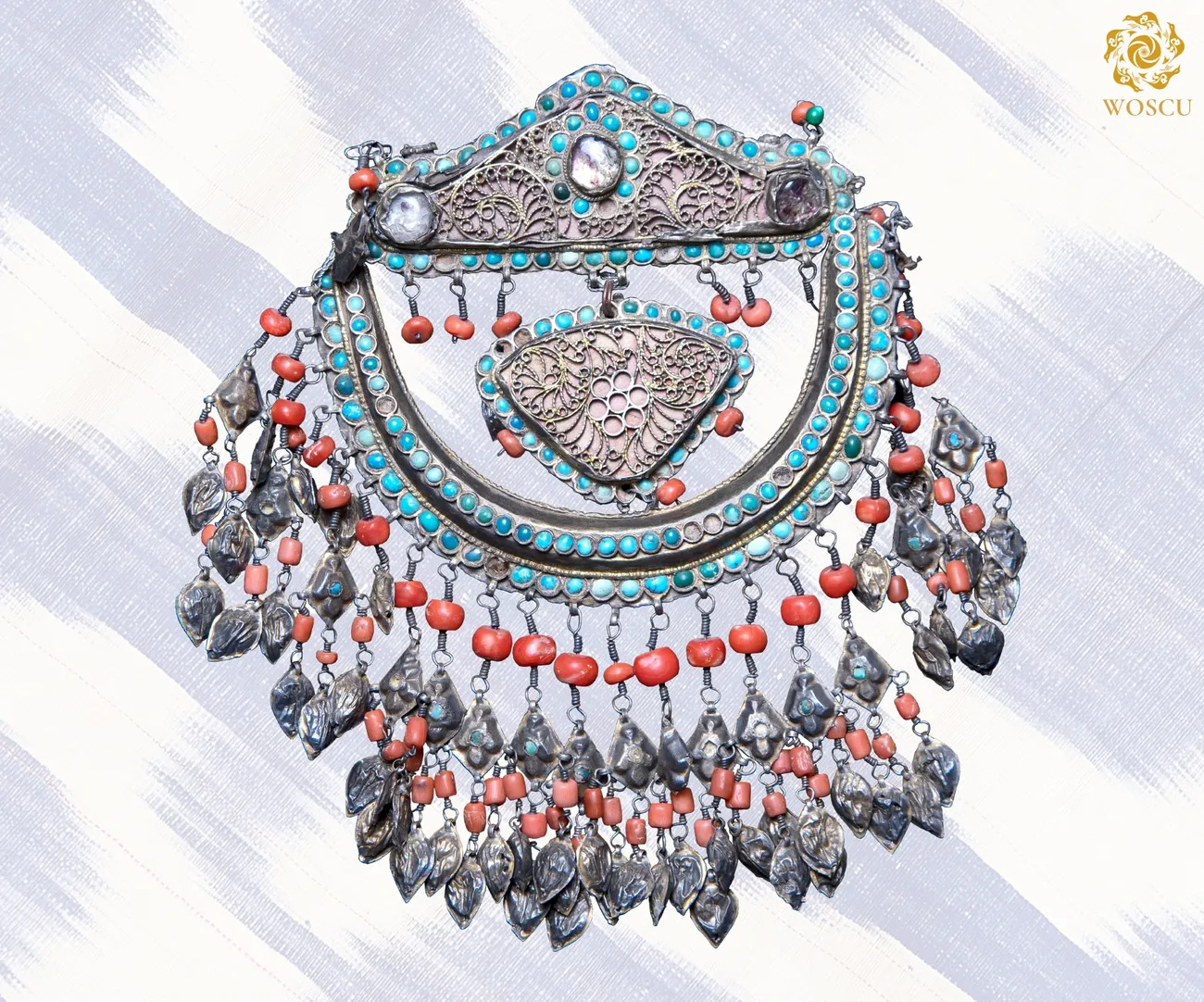In the 19th century the largest centers of this craft were Khiva, Bukhara, Samarkand, Karshi, Kokand. And each center had its own forms and decor of jewelry.
The most widespread metal was silver, less often – bronze and copper, and only Bukhara jewelers always preferred gold. Gold was also used for gilding, since, according to sharia, men were forbidden to wear gold jewelry. Precious and semi-precious stones such as rubies, emeralds, sapphires, garnet, beryl, turquoise, carnelian, as well as corals, pearls and mother-of-pearl, colored glass enjoyed great love. Traditionally, in Uzbekistan, precious stones for jewelry were not cut, but polished. The techniques employed by the jewelers were varied. These are forging, soldering, stamping, embossing, engraving, nielloing, enamel, plated and openwork filigree, granulating, and artistic braiding.
You can learn more about the topic in the book-album "The Collection of the State Museum of Applied Art and Handicraft’s History of Uzbekistan" (XXXIX volume) from the series "The Cultural Legacy of Uzbekistan".
The main sponsor of the project is the oilfield services company Eriell-Group.

